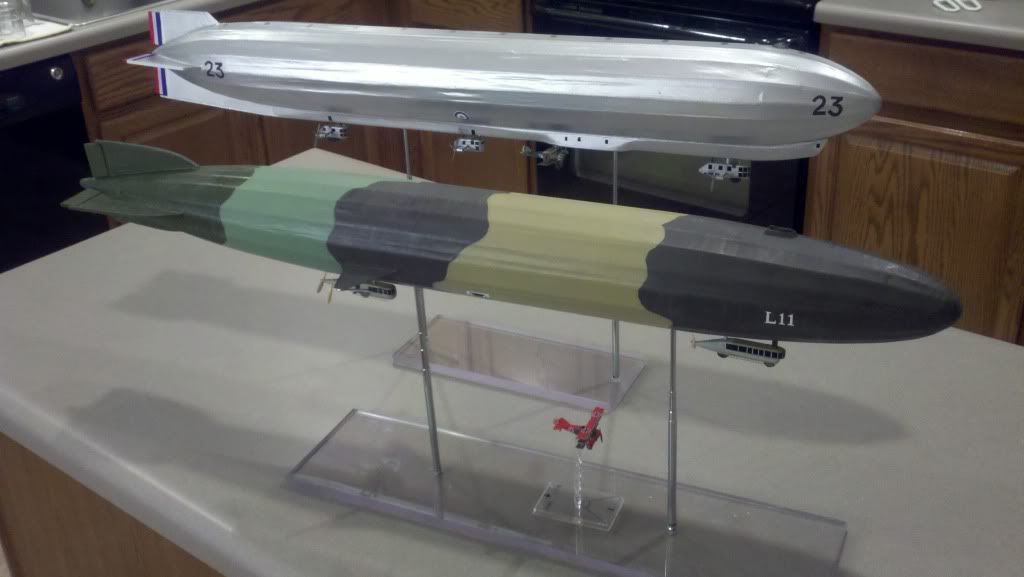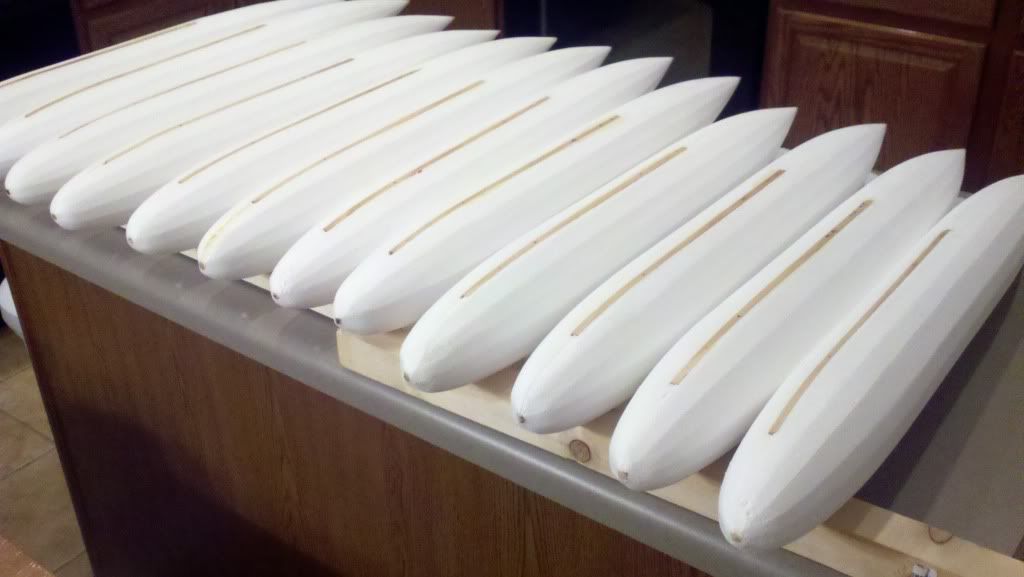If I could only do it all over again . . . Oh I can? Cool. Here is the deepest delve into my madness.
Remember the "Building Dirigibles" thread, I got a lot of mail and great responses, but the models were a month of hard work and the end result while very cool, were not as durable as I had wanted. The search began for the ultimate Zeppelin. After kicking around ideas from vacuum molding to casting, I re-discovered a technique I had used to build foam wings for control line stunt models I had used back in the 70's.
Foam is a strange beast, very different formulations and ever greater ranges of density and workability. I had hoped to find the old blue, pink or gray 2" styrene sheet of yesterday and found out it is not available here. In desperation I made a personal visit to the home construction mega mart, only to not find what I wanted. Instead I found something better. Out here in the desert of Arizona most houses are made of plywood with stucco finish and trim. They use a foam billet for trimming around the windows made of a high density expanded bead styrene. It comes in strips instead of sheets, and to my delight in 2" x 4" x 96" strips. This is not your normal foam, it is quite hard and if cut with a 400 degree nichrome wire, it seals itself into a perfect medium for our purposes here. So I bought a pile of it.
Now to make it happen. I routed a 1/4" groove lengthwise and chopped the chunks to length, routed a keel slot in each one, installed a dowel to the groove, slathered both sides with glue and started stacking them in the corner. Added a lot of weight and went to bed.
After a night of tossing and turning the next step through my dreams, I awoke and began constructing the cradle, guides, rotary indexer device, and a foam cutter. The concept and design are very simple and straight forward. The foam block is now 4" x 4" X 30" long with a 1/4" dowel running its length through its center. This core is then suspended between two end plates allowing the core to be rotated a few degrees at a time. Meanwhile the sides of the fixture are cut to the side profile of the final zeppelin, lined with steel wire to keep the shape consistant and to prevent the hot wire from burning into the profile.
The foam cutting frame is built with a capacity to handle the 400 degree heat and the normal heat expansion of the wire. Once connected to my power source, the wire is heated and tested for a nice clean cut. The cutting frame is then drawn along the steel guides of the fixture the length of the foam core, cutting it to a nice half zeppelin shape! Way cool.
The core is then rotated the required degrees of angle and the process is repeated 16 times. Producing a cool foam corn dog!
A keel is required to attach the mounting poles and the nacelles. Again the router cut a nice groove down the belly of the beasties and a 1/4" spruce strip was pre-drilled and inserted into the foam.
A final sand, a coat of polyacrylic and the hull is done! Fast, freaky fast.
Fins, gun emplacements, all the details were fabricated, and a fixture designed to align and attach them.
Nacelles were redesigned to attach with mini magnets and steel pins so they can be removed for easy transport.
All that is left is painting and detailing! That's all . . .
The results you can see, rugged, transportable, playable! These babies can be dropped, poked and prodded and survive to fight another day! Enjoying my madness?
Whew! Now it's time to raid England! Operation Zeppelin Overcast begins!"
From clipper the great !
06/03/2017
Un éditeur français pour Wings of Glory : ASYNCRON GAMES
Une excellente nouvelle pour Wings of Glory et les joueurs français.
C'est ASYNCRON GAMES
(éditeur des jeux Conflict of Heroes, Quartermaster, Mare Nostrum,
Fief, L'Aéropostale ...) qui va publier l'édition française de la boite
Wings of Glory BATTLE OF BRITAIN WW2.
ASYNCRON GAMES souhaite
s'appuyer sur la communauté des joueurs français WOG pour vérifier leurs
traductions et proposer ultérieurement des scénarios.
Les traductions commenceront d'ici un mois en vue d'une publication entre septembre et novembre 2017 et avoir les boites avant Noël.
Dans un premier temps, seule la période WW2 est concernée.
En fonction des ventes, ASYNCRON GAMES pourra envisager l'édition de la gamme WW1.
La
distribution devrait se faire en direct auprès des boutiques de jeux
spécialisées, ainsi qu'auprès de grandes enseignes comme Philibert.
Commencez à en parler à votre magasin de jeux préféré afin qu'il prépare la rentrée 2017.
Évitez d'acquérir une édition anglaise de Battle of Britain, en patientant quelques mois pour obtenir l'édition française.
Supportons la démarche de cet éditeur pour réintroduire Wings of Glory en France.
source du message : forum "le cirque volant"
Libellés : wings of glory, Wings of war
07/07/2016
L'Armstrong Whitworth F.K.10 est un avion biplace de chasse britannique de la Première Guerre mondiale. C'est aussi un des rares avions quadriplans à avoir été commandé en série.
"50 exemplaires en furent commandés pour les besoins du Royal Flying Corps et du Royal Naval Air Service, le prototype prenant l’air début 1917, mais rapidement cet avion se révéla très inférieur au Sopwith 1½ Strutter,
chasseur biplace qui était déjà en service. La commande fut donc
annulée après livraison par Angus Sanderson & Co de 5 exemplaires au
RFC, le RNAS prenant en compte le prototype et 2 appareils de série
construits par Phoenix Dynamo Manufacturing Co. Le F.K.10 ne fut donc
jamais utilisé sur le front."
sources wikipédia
| Constructeur | |
|---|---|
| Rôle | Chasseur |
| Premier vol | Début 1917 |
| Nombre construits | 8 |
| Équipage | |
| 2 personnes | |
| Motorisation | |
| Moteur | Clerget 9B |
| Nombre | 1 |
| Type | Moteur en étoile |
| Puissance unitaire | 130 ch |
| Dimensions | |
| Envergure | 8,48 m |
| Longueur | 6,78 m |
| Hauteur | 3,5 m |
| Surface alaire | 36,27 m2 |
| Masses | |
| À vide | 562 kg |
| Avec armement | 916 kg |
| Performances | |
| Vitesse maximale | 135 km/h |
| Plafond | 3 500 m |
| Armement | |
| Interne | 1 mitrailleuse Vickers de 7,7 mm fixe avant 1 mitrailleuse Lewis de 7,7 mm sur pivot arrière |
Libellés : wings of glory, Wings of war
28/06/2016
A la suite de démarches pressantes de sir Douglas Haig, le commandant en chef britannique en France, et, à l'entrée en lice d'Albatros D I et D II en grand nombre, le Triplane fit l'objet de commandes du RFC et du RNAS, mais en fait, il ne servit de façon régulière que dans les unités du RNAS.
Libellés : wings of glory, Wings of war
14/06/2016
Fokker V.4
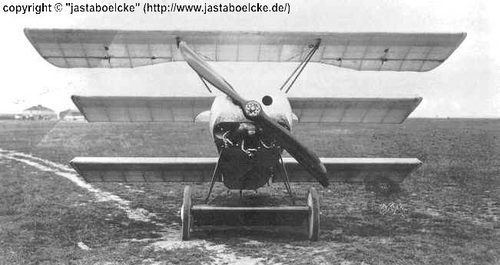
Fokker F.1
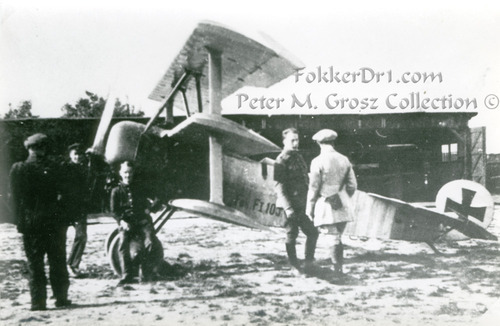
Bien que le V.4 se soit avéré être difficile à piloter, la poursuite du développement de l'avion a abouti au modèle F.1 avec plus de succès. Les ailes en porte à faux de la version V.4 ont été jugées trop souples, aussi les ailes ont été calées pour permettre un meilleur contrôle en vol. Ce fut le dernier prototype avant la Dr.1 surnommé l’infâme combattant. Avec trois ailes légèrement décalées, et une petite aile entre le train d'atterrissage, l'avion était incroyablement similaire au Dr.1 qui a suivi. Bien que seulement trois aient été produits, ils ont été testé en combat en 1917 sur la Belgique par Manfred von Richthofen, qui a marqué sa 60e victoire aérienne avec cet avion.
Fokker V.6
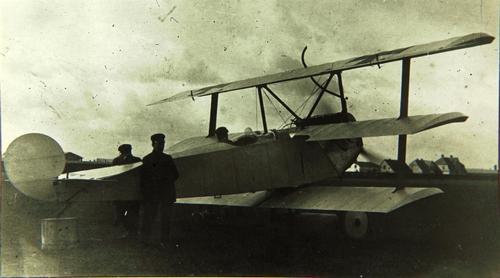
Le modèle V.6 était un autre triplan prototype développé par Fokker. Il présentait un moteur plus puissant et plus lourd, ce qui a nécessité l'usage de plus grandes ailes. Comme le F.1, il avait des entretoises montées entre les plans pour réduire la flexion des ailes, mais bizarrement, l'aile inférieure a été placée légèrement en dessous du fuselage plutôt que "collée" au fuselage. Cependant, le test ont vite montré les inconvénients de ce montage, et des carénages ont été ajoutés pour combler ce vide. Alors que les essais de la F.1 continuaient, le Dr.1 est entré en service, et le modèle V.6 a été abandonné en Octobre 1917, car il s'est avéré moins manœuvrant que le Dr.1.
Fokker V.8
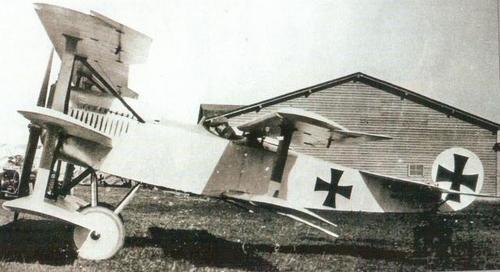
- Deux rangées d'ailes, avec trois ailes à l'avant et deux ailes dans la partie médiane de l'aéronef. Les volets sur les ailes avant agissaient comme des ailerons, tandis que les volets sur les ailes arrière travaillaient de concert avec la queue pour l'ascension. Vraisemblablement parce que représentait une idée arriérée, dépassée, personne ne voulait le faire voler, Anthony Fokker dût en être le pilote d'essai. Après deux vols très courts, Fokker décida de l'abandonner. Reinhold Platz, l'ingénieur qui avait pour mission de développer l'avion, détestait parler de cet avion et estimait qu'il était une source d'embarras.
Libellés : wings of glory, Wings of war
06/06/2016
Albatros Dr.I
Découvert sur le site http://kplanes.tumblr.com, d'un passionné d'avions et d'aéronautique, ces projets d'avions triplan développés par la société Albatroswerke pour l'armée allemande, sur une base d'Albatros.
En réponse à l'arrivée sur le front du Sopwith triplane anglais.
Ce modèle DR1 était une conversion du modèle D.V. sur lequel étaient montés les 3 plans.
Les 3 ailes sont de taille égale, les ailes inférieures et supérieures sont montés décalées du fuselage, alors que l'aile centrale l'est quasiment au centre du fuselage.
Testé mi 1917, les tests ne montraient malheureusement aucune amélioration des performances de l'avion d'origine. Le projet fut abandonné.
Libellés : figurine avion, wings of glory, Wings of war
10/04/2012
Des pilotes avec chacun des caractéristiques spéciales.
Et des capacités spéciales, hors normes pour des pilotes exceptionnels.
Libellés : cartes wings of war spéciales, wings of glory, Wings of war
22/03/2012
A preview of prototypes for Sopwith Triplane, Hanriot HD.1, Aviatik D.1 and SS D.III.
Les modèles ont l'air superbes, les volumes sont bien marques, si la production suit cette qualité de détails, ils vont être superbes. Jetez un œil aux formes d'hélices et aux capots moteurs, ca promet !
Libellés : figurine avion, Wings of war
22/02/2012
Quelques images d'un SE5A. Une vieille bobine argentique, retrouvée par hasard dans une grange de Lorraine...
Libellés : figurine avion, Wings of war
12/02/2012
wings of glory for WWI and WWII. Nouveau design proposé par le nouvel éditeur Ares.
To make easy to get started on WW1 Wings of Glory, Ares Games will release a Rules and Accessories Pack that will include everything needed to start playing the WW1 version of the game system. Airplane miniatures are not included, however - the pack must be combined with two or more Airplane Packs or Special Packs - each featuring a miniature and its maneuver deck - or with a Starter Set.
Players will find all WW1 rules – Basic, Standard, Advanced, Optional and the ones to use with models, such as multi-engine bombers and balloons, and weapons (rockets and incendiary bullets). The pack will also feature four decks of Damage Cards (A, B, C, D), Target, Trench, Machine Gun, Anti Aircraft Guns and Bomb cards, four airplane consoles, two rulers and counters.
“We decided to publish this Rules and Accessories Pack to provide a complete starting point to our range. This will benefit both new players and those fans who already own miniatures and sets from the ‘Wings of War’ brand. This compendium combines all existing rules of the WW1 game system, as well its cards and counters. Gamers will be able to start playing with the first WW1 Wings of Glory release, the Bombers Special Packs, and also to play with all the Airplane Packs and Special Packs that will come in the future. The rules are also compatible with all the existing Wings of War products that players already own”, said Christoph Cianci, CEO of Ares Games.
dates :
The Rules and Accessories Pack will be released in April, just after the arrival of the Bombers Special Packs (Caproni Ca.3 and Gotha G.V). The first WW1 Wings of Glory Airplane Packs are planned to be available at the same time as the Rules and Accessories Pack, and will feature the models Fokker E.III, Halberstadt D.III, Morane-Saulnier and Airco D.H.2.
Wings of Glory WWII new design box :
Libellés : dawn of war, wings of glory, Wings of war
03/02/2012
Incredible Dirigible...from aerodrome forum.
Libellés : figurine avion, Wings of war







































